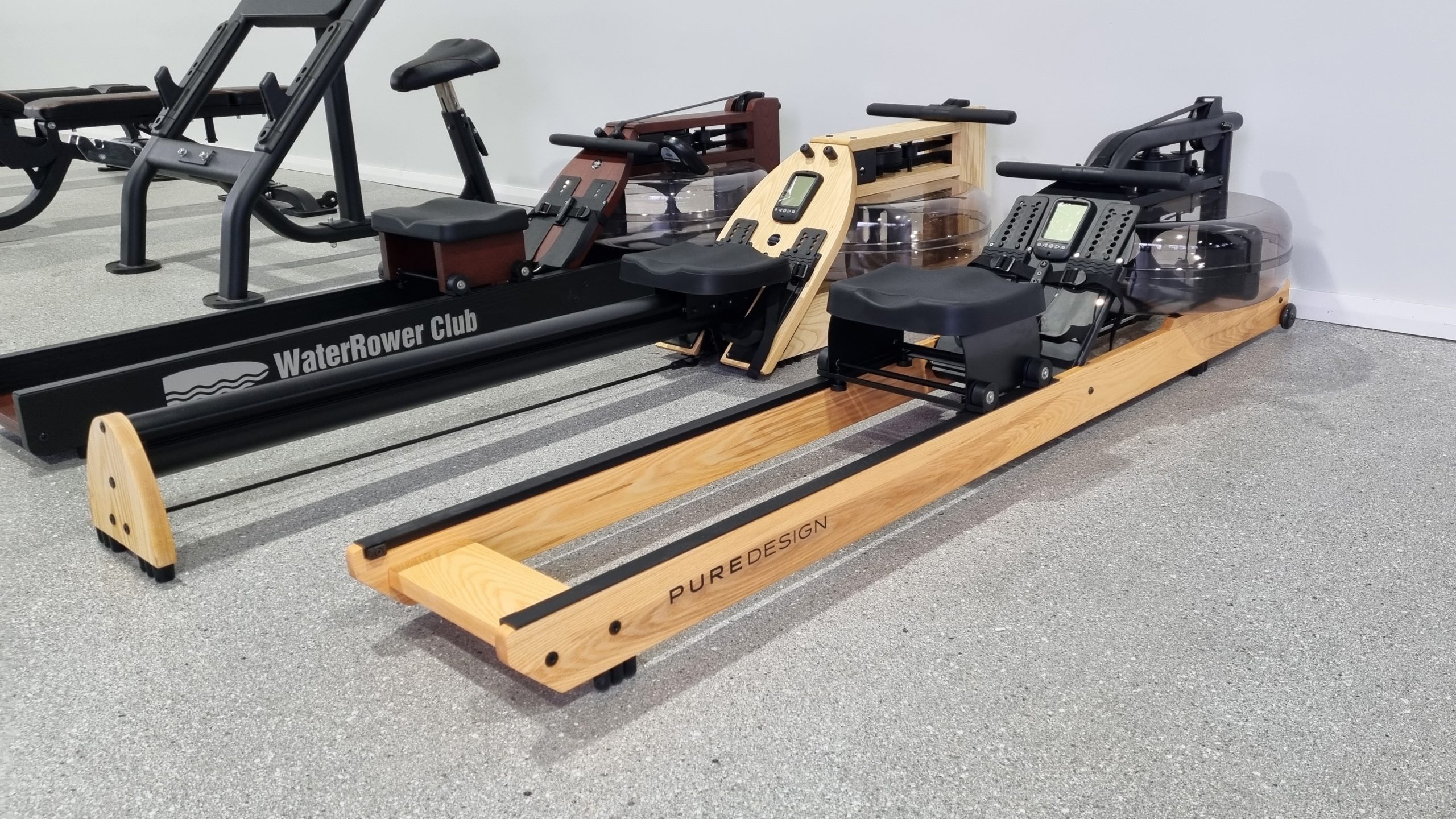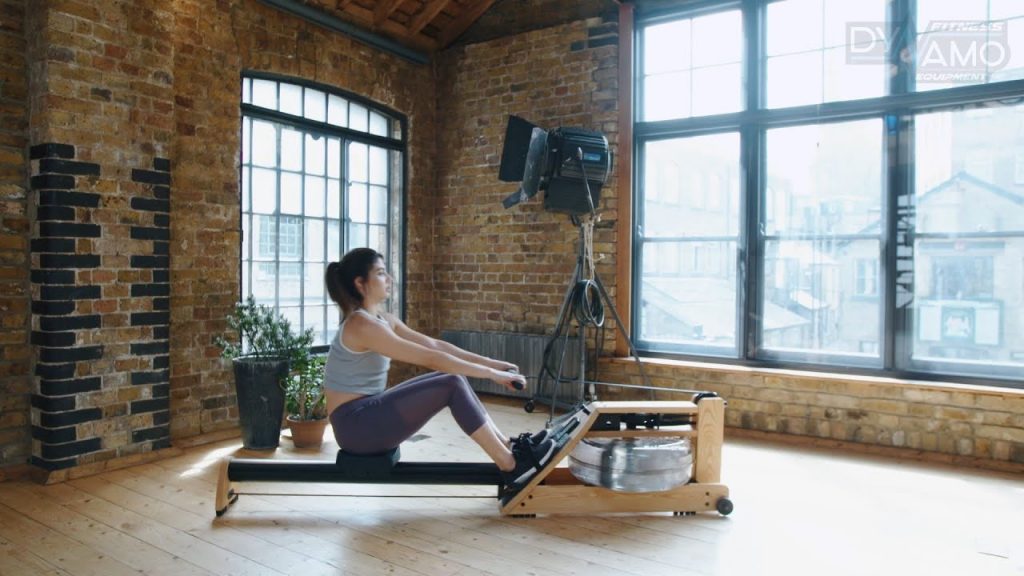
Mind-Body Benefits of a Water Rower Workout
Water rower workouts are more than just exercise – they’re a holistic experience. By harnessing water’s resistance, regular rowing works wonders for your body and mind. The rhythmic motion engages multiple muscle groups simultaneously, offering a full-body workout that traditional cardio exercises can’t match.
Not only does it sculpt muscles, but the low-impact nature of water rowing machines makes them gentle on joints, reducing the risk of injury. Join us as we delve into the surprising mind-body benefits of this unique fitness approach.
Full-Body Workout and Posture Improvement with Water Rower
Engaging Major Muscle Groups
Water rowing provides a total body workout, engaging the arms, legs, core, and back. This means that when you’re using a water rower, you’re not just working on one specific area of your body; you’re getting a comprehensive workout. The pulling motion works your arms and upper body, while the pushing motion engages your lower body.
Rowing is an excellent exercise for building body strength because it requires effort from multiple muscle groups simultaneously. By consistently incorporating water rower workouts into your routine, you can expect to see improvements in overall fitness and endurance due to full-body engagement.
Promoting Balance and Coordination
The fluid movement of rowing doesn’t just work muscles; it also promotes balance and coordination. As you push back with your legs and pull with your arms during each stroke, your entire body is involved in maintaining stability on the seat. This continuous balancing act helps to improve coordination over time.
Moreover, regular water rower workouts can contribute significantly to improving posture by strengthening the back muscles. When these muscles are strengthened through consistent training, they provide better support for the spine which can reduce or prevent back pain caused by poor posture or weak muscles.
Read Also: The Ultimate Guide for Buying Water Rowers in Ausralia
Calorie Burning and Belly Fat Reduction
Effective Calorie Burn
Water rowing is a fantastic way to burn calories. It engages various muscle groups, making it an effective total body workout. This means that you can burn a significant number of calories in a relatively short period.
Rowing workouts are not only about the arms and legs; they also engage the core muscles, which play a crucial role in calorie burning. As you push through the water with your legs and pull back with your arms, your entire body is working hard, leading to substantial calorie expenditure.
Targeting Abdominal Muscles
One surprising benefit of water rower workouts is their ability to target abdominal muscles, aiding in reducing belly fat. The motion of rowing engages the core throughout each stroke, helping to strengthen and tone these muscles over time.
High-intensity interval training (HIIT) on a water rower can be particularly effective for reducing belly fat. By alternating between periods of intense effort and rest, HIIT maximizes calorie burn during the workout while also promoting afterburn or excess post-exercise oxygen consumption (EPOC), where the body continues to burn calories after exercise.
Incorporating regular water rower sessions into your fitness routine can lead to noticeable improvements in both body fat percentage and overall fitness levels. The combination of full-body engagement and targeted abdominal work makes it an excellent choice for those looking to reduce belly fat while improving their overall health.
Cardiovascular and Aerobic Advantages
Improved Cardiac Function
A water rower workout is an excellent way to enhance cardio health. This form of exercise elevates the heart rate, effectively strengthening the heart muscle. As you row, your heart pumps more blood, increasing its overall efficiency. Over time, this can lead to a lower resting heart rate, indicating improved cardiac function.
Regular water rowing also contributes to better aerobic endurance. By engaging in consistent workouts on a water rower, individuals can gradually increase their stamina and lung capacity. The rhythmic motion of rowing at a steady pace helps improve aerobic endurance over time.
Reduced Risk of Cardiovascular Diseases
Engaging in regular water rowing sessions offers significant benefits for lowering the risk of cardiovascular diseases. This type of workout not only strengthens the heart but also improves circulation and blood flow throughout the body. As a result, it helps reduce the likelihood of developing conditions such as high blood pressure, stroke, or heart disease.
In addition to burning calories and reducing belly fat (as mentioned in the preceding section), incorporating water rower workouts into your fitness routine provides holistic advantages for both physical fitness and cardiovascular health.
Read Also: How to Use Water Rowers for Maximum Results
Mental Health and Meditative Benefits

Stress Reduction
Engaging in a water rower workout can significantly reduce stress and anxiety. The repetitive motion of rowing has a calming effect on the mind, helping to alleviate feelings of stress. This type of exercise provides an excellent outlet for releasing tension and promoting relaxation.
Water rower workouts also trigger the release of endorphins, which are neurotransmitters that act as natural painkillers and mood elevators. These endorphins contribute to an overall sense of well-being, promoting feelings of happiness and contentment.
As a result, individuals who regularly participate in water rowing experience mental health benefits such as reduced stress levels and improved emotional balance.
Meditation through Rhythm
Focusing on the rhythmic motion involved in water rowing can serve as a form of meditation. By concentrating on each stroke’s fluidity and synchronicity with breathing patterns, individuals engage in meditative practice without even realizing it. This mindful approach promotes mental clarity, allowing participants to escape from daily worries while enhancing their ability to stay present in the moment.
Low-Impact Exercise for All Fitness Levels
Gentle on Joints
Water rowing provides a low-impact workout, making it perfect for individuals with joint pain or injuries. The smooth gliding motion of the water rower reduces stress on the joints, allowing people with arthritis or other joint issues to exercise comfortably.
For example, someone recovering from a knee injury can benefit from the fluid movement of a water rower without causing further strain on their joints. This makes it an ideal choice for those looking to stay active while avoiding high-impact activities that could exacerbate their condition.
Read Also: Why Water Rowing Machines Are Famous in Fitness Communities
Suitable for All Ages and Fitness Levels
The adjustable resistance levels of water rowers make them suitable for everyone, including beginners and seasoned athletes alike. Beginners can start at a comfortable intensity and gradually increase as their fitness level improves over time.
Water rowers are great for older adults who may have varying fitness levels due to age-related changes. They offer a safe and effective workout option that allows individuals to tailor the intensity based on their capabilities.
Conclusion on the Mind-Body Transformation
Holistic Approach
A water rower workout goes beyond just physical fitness; it offers a holistic approach that benefits both the mind and body. The rhythmic motion of rowing engages various muscle groups, promoting physical strength and endurance. At the same time, the mental focus required during a water rower workout fosters a deep connection between the mind and body.
The unique combination of physical exertion and mental focus makes water rowing a transformative exercise. As you propel yourself through the water, you’re not only building cardiovascular fitness but also engaging in a meditative process. This dual impact on the mind and body sets water rower workouts apart from other forms of exercise, offering a comprehensive experience that enhances overall well-being.
Shop premium quality water rowing machines and air rowers today.
